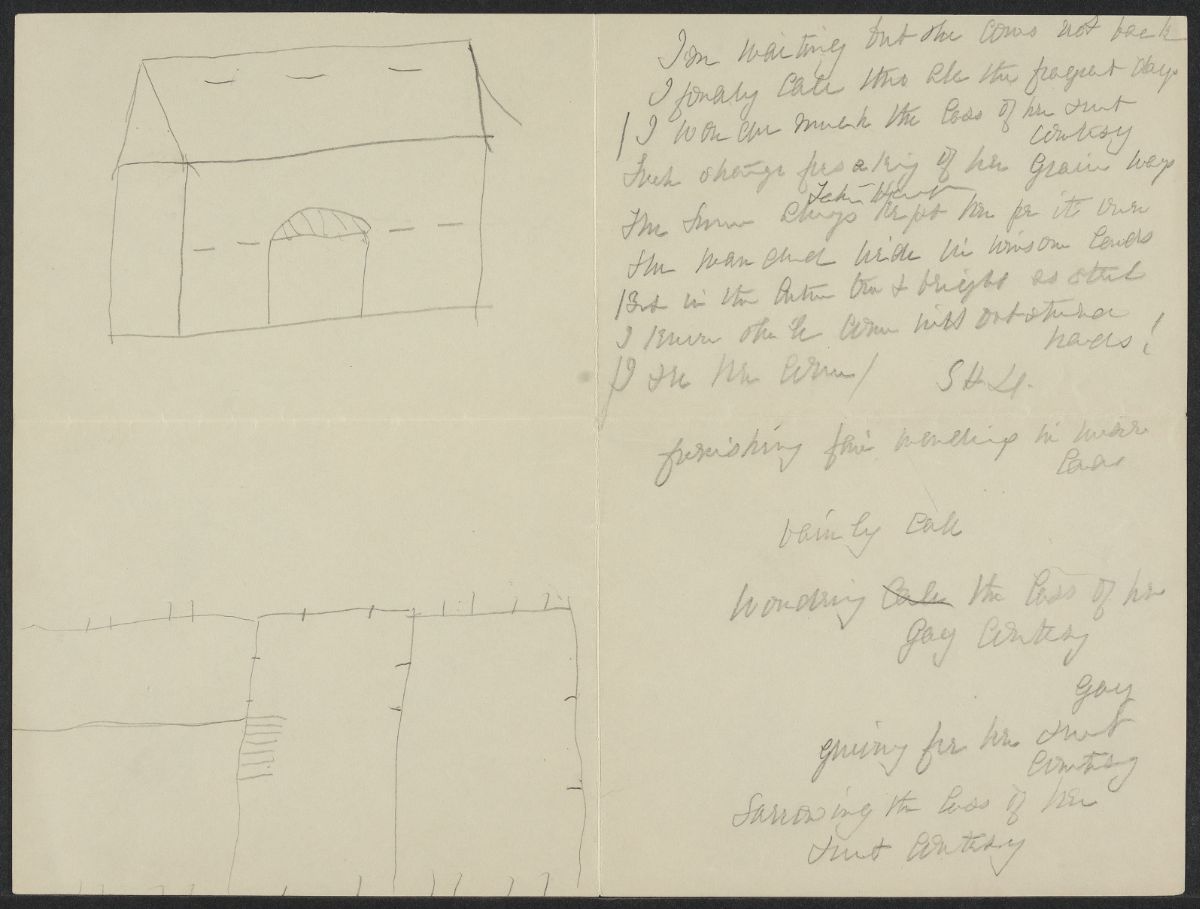<< Return to Poems
I'm waiting but she comes not back
H bMS Am 1118.95, Box 9
Late 1880’s? In less stylized writing of fair copy mss. Pencil, on first page, first leaf, of a two-leaf, four-page worksheet on which Susan was revising a poem and making notes for her "Book of Emily". On the third and fourth pages of this folded sheet are Susan's notes (see "If some day far off I") and a child's drawing.
Though she signs the piece, a practice she appears to adopt only when sending a poem out (like Emily), Susan is considerably less self-conscious in perfecting this poem’s rhyme scheme and meter compared with other signed poems (see "Valentine's Day"), and the language is loving and "fond." This argues for an intimate correspondent such as her daughter Martha, who the poem may even address specifically (in the tradition of Emily's letter-poems). Another possibility may be that this is elegiac verse for Emily, "sorrowing the loss of her sweet courtesy," which Susan planned to send to someone, in that case probably a close relative, such as Martha.
In its rough draft state, logic and poetic aim are difficult to discern and interpret. Striking though, is evidence of a later (maybe always private) shift to prosaic style and line unit, (see discussion of "The robins choose to-day"), illustrated by many of these lines, e.g. "I wonder much the loss of her sweet courtesy" which Susan seems ambivalent about in the more self-conscious revision process(see variant "Wondering the loss of her gay courtesy" at the bottom of the page, which shifts back to phrasal unit). Also unique to the poem is its collapse of what appears to be two quatrains of even rhyme. As with her early poem "Did I but purpose to embark with thee", there are very few printed analogs for poems under 14 lines (sonnet length) and even fewer under 12; thus, Emily appears to be the strongest influence. With its six lines "Did I..." echoes Emily's condensed aphoristic poems of the early 1860's, while this poem mirrors her occasional quatrain collapse in later poems of the 1870's and '80s, practices Susan would have been very familiar with as several of these were sent to her and likely many more seen. (e.g., "How destitute is he" (J1477; c. 1879) which Susan prepared in typescript from a fair copy Emily sent her. Like Susan's, Emily's has eight lines of even rhyme, though lines are metrically shorter, alternating between trimeter and the very unusual dimeter.




